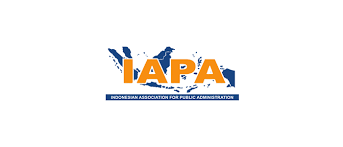Improvement Of Employee Competency Through the Learning Duty Program and Self-Learning Permits
Abstract
In improving the quality of the State Civil Apparatus (ASN) or Civil Servants (PNS) in accordance with the development of science and technology in this milineal era, employees are required to be able to develop in accordance with the needs of organizations that are also developing, so that the quality of the human resources highly highlighted, based on the Head of the State Personnel Agency Regulation No. 8 of 2013 Technical Competency is the ability of every Civil Servants (PNS) that includes knowledge, skills and work attitudes that are needed in carrying out his job duties. The Directorate General of Conservation of Natural Resources and Ecosystems is one part of the Ministry of Environment and Forestry which aims to improve the quality of the Ministry's Human Resources. Thus an increase in competency among employees within the Directorate General of Natural Resources and Ecosystem Conservation covers the dimensions of Skills, Knowledge, Self-Concepts, Character and Encouragement through the study assignment program and independent study permit, which in increasing this competency can provide increased competency of employees in carry out their duties in accordance with their positions, where employees are more adept at responding, careful, fast and intelligent in carrying out their duties in accordance with applicable regulations when employees carry out tasks within the scope of the Directorate General of Conservation of Natural Resources and Ecosystems.
References
Brown, K. G. (2005). A field study of employee e‐learning activity and outcomes. Human Resource Development Quarterly, 16(4), 465–480.
Dixon, D. L. (2013). Relationships among servant leadership, organizational citizenship behavior, and school climate in Alabama high schools.
Garg, P., & Rastogi, R. (2006). New model of job design: Motivating employees’ performance. Journal of Management Development, 25(6), 572–587.
Jonsen, A. R., & Toulmin, S. (1988). The abuse of casuistry: A history of moral reasoning. Univ of California Press.
Newcomb, M. D., & Loeb, T. B. (1999). Poor parenting as an adult problem behavior: General deviance, deviant attitudes, inadequate family support and bonding, or just bad parents? Journal of Family Psychology, 13(2), 175.
Phillips, L. (2013). Human adaptation and its failures. Academic Press.
Purnamasari, I., Munjin, R. A., & Ratnamulyani, I. A. (2019). PENATAAN SUMBER DAYA MANUSIA APARATUR DAERAH BERBASIS KOMPETENSI. JURNAL GOVERNANSI, 5(1), 70–78.
Rodriguez, D., Patel, R., Bright, A., Gregory, D., & Gowing, M. K. (2002). Developing competency models to promote integrated human resource practices. Human Resource Management: Published in Cooperation with the School of Business Administration, The University of Michigan and in Alliance with the Society of Human Resources Management, 41(3), 309–324.
Sophia, G., & Sarno, R. (2019). AHP-TOPSIS for analyzing job performance with factor evaluation system and process mining. Telkomnika, 17(3), 1344–1351.
Sugiyono, P. (n.d.). Dr.(2017), Metode Penelitian Pendidikan: Pendekatan Kuantitatif, Kualitatif, R&D. Cetakan Ke-25. Bandung: CV Alfabeta.
Copyright (c) 2019 Indonesian Journal of Social Research (IJSR)

This work is licensed under a Creative Commons Attribution-ShareAlike 4.0 International License.
The Authors submitting a manuscript do so on the understanding that if accepted for publication, copyright publishing of the article shall be assigned/transferred to Indonesian Journal of Social Research (IJSR) Universitas Djuanda as Publisher of the journal. Upon acceptance of an article, authors will be asked to complete a 'Copyright Transfer Agreement'. An e-mail will be sent to the corresponding author confirming receipt of the manuscript together with a 'Copyright Transfer Agreement' form by online version of this agreement.
Indonesian Journal of Social Research (IJSR) Universitas Djuanda, the Editors and the Editorial Board make every effort to ensure that no wrong or misleading data, opinions or statements be published in the journal. In any way, the contents of the articles and advertisements published in the Indonesian Journal of Social Research (IJSR) Universitas Djuanda are sole and exclusive responsibility of their respective authors and advertisers.
Remember, even though we ask for a transfer of copyright, our journal authors retain (or are granted back) significant scholarly rights as mention before.
The Copyright Transfer Agreement (CTA) Form can be downloaded here: Copyright Transfer Agreement-IJSR 2020
The copyright form should be signed electronically and send to the Editorial Office e-mail below:
Dr. Rasmitadila, M.Pd (Editor-in-Chief)
Universitas Djuanda
Jl. Tol Jagorawi No.1, Ciawi, Kec. Ciawi, Bogor, Jawa Barat 16720
Website: http://journal.unida.ac.id/index.php/IJSR/index
Email: ijsr@unida.ac.id





4.png)



